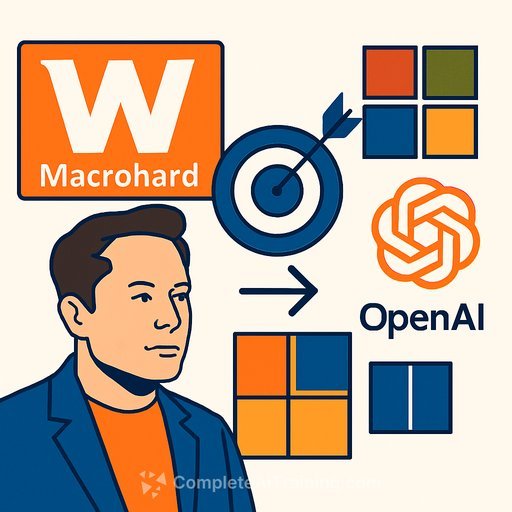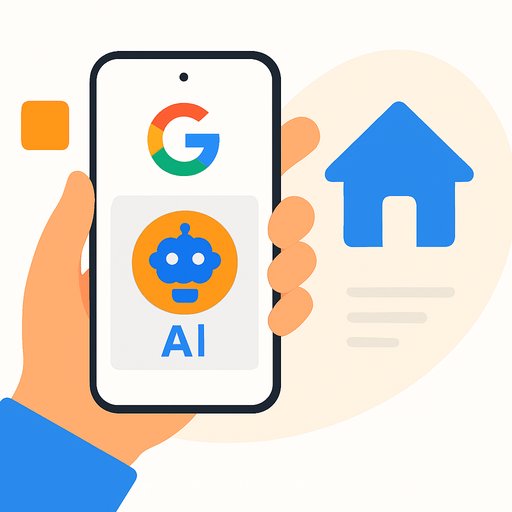Elon Musk's "Macrohard" targets full-stack AI automation for software development
Elon Musk says xAI is building "Macrohard," a satirical nod at Microsoft with a serious goal: an AI-run software company that operates without human oversight. Musk confirmed the project publicly after "MACROHARD" appeared on the roof of xAI's Colossus II supercomputer cluster in Memphis. He framed the ambition clearly: handle anything short of manufacturing physical goods directly-outsourcing hardware much like Apple does.
Evidence points beyond a meme. A trademark application for "macrohard" was filed on August 1, 2025, covering downloadable software, indicating intent to ship products under the name. The tone is tongue-in-cheek; the program is not.
What is Macrohard
Announced in August 2025, Macrohard aims to simulate a large software company using Grok agents-xAI's AI systems-to run coding, design, and related workflows end-to-end. The target: a company that writes, reviews, tests, deploys, and maintains software with minimal human involvement. If software giants don't build hardware themselves, Musk argues, an AI system can mirror their operating model.
That raises a direct challenge to incumbents like Microsoft, which Musk has frequently needled. The bigger story for product teams: what changes when software development, QA, and release ops become agent-first functions.
Why this matters for product development
- Throughput shifts from headcount to compute and orchestration. Backlogs that used to take quarters could compress into weeks.
- Roadmaps become constraint-driven: data access, policy, integration quality, and user feedback loops become the bottlenecks.
- Roles tilt from creation to curation: product leads define problems, constraints, specs, and guardrails; agents do the execution.
- Cost structure changes: fewer people on repetitive implementation, more investment in evaluation metrics, model governance, and integration architecture.
A practical playbook to test this now
- Select a low-risk, high-clarity product module (docs site, internal tooling, integrations) as an agent-only pilot.
- Define "red lines" and decision rights: what agents can ship autonomously vs. what needs human review.
- Instrument quality from day one: unit coverage, mutation scores, static analysis gates, vulnerability scan thresholds, and rollback time.
- Adopt policy-as-code for releases and access (secrets rotation, license compliance, SBOM checks, data retention).
- Enforce a feedback loop: automated UX telemetry, error funnels, and user interviews to catch agent blind spots.
- Stand up "AI PM" and "AI QA" responsibilities: prompt specs, constraint design, eval set maintenance, and post-release audits.
Stack considerations
- Multi-agent orchestration with role separation (planner, coder, reviewer, tester, deployer).
- Repo- and service-level context windows with secure retrieval and least-privilege credentials.
- Automated test generation, property-based testing, and contract tests for integrations.
- Ephemeral environments for PRs, policy-gated CI/CD, and release checklists enforced by bots.
- Software supply chain defenses: dependency pinning, provenance (SLSA), and continuous SBOM diffing.
Knowns, unknowns, and risks
- Status signals exist: public statements, rooftop branding, and a trademark filing for "macrohard." Actual product timelines remain unclear.
- Failure modes: plausible-but-wrong code, insecure dependencies, spec drift, and subtle UX regressions.
- Governance gaps: IP provenance, third-party license conflicts, and audit trails for autonomous changes.
- Organizational friction: redefinition of ownership, incentives, and review culture as agents take routine work.
What to watch next
- Public demos of autonomous repo work across full SDLC (issue to deploy).
- Benchmarks against human baselines: cycle time, defect escape rate, MTTR, and user satisfaction.
- Partnerships with cloud providers, dev platforms, or enterprise pilots.
- Regulatory guidance on AI-generated code, liability, and software provenance.
For product leaders, the move is straightforward: carve out agent-only lanes, define strict metrics, and let data decide scope expansion. Whether Macrohard ships this quarter or later, the operating model it points to is testable today.
Sources and further reading:
xAI Grok overview
USPTO trademark search
Get your team ready:
AI courses by job role
Automation-focused resources
Your membership also unlocks:






